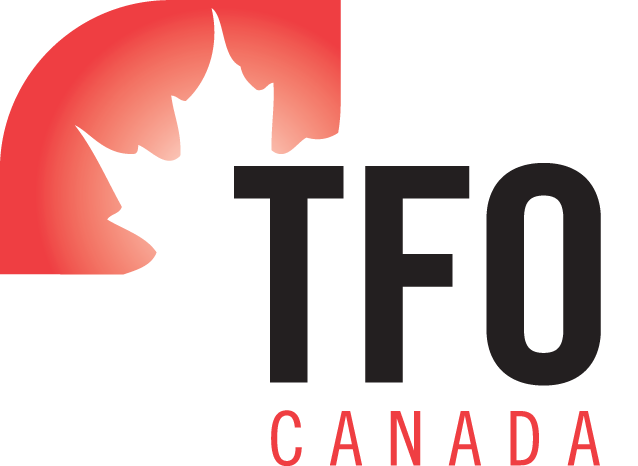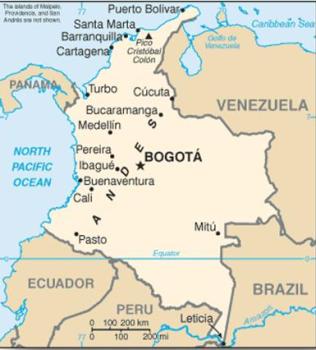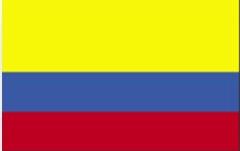Colombia – Country Profile
General Information
Official Name: Republic of Colombia
Capital: Bogota
Total Area: 1,138,914 sq km
Population (in thousands): 43,677
Currency: 1 CAD = 1, 86 Colombia Pesos (COP) (2010)
National Holiday: 20 July (1810)
Languages: Spanish
Main Cities: Cali, Medellin, Barranquilla and Cartagena
Political Information
Type of State: Republic
Head of State & Government: President Juan Manuel Santos
Vice President: Angelino Garzon
Elections: Last –May, 2010 Next -2014
Economic Information
| Colombia | Canada | |
| GDP (PPP): | $400.3 billion | $1.287 trillion |
| GDP per capita: | $9,200 | $38,400 |
| GDP annual growth rate: | -0.1% (2.4% in 2008) | -2.4% (0.4% in 2008) |
| GDP – composition by sector | Agriculture: 9.1%
Industry: 38.2% Services: 52.8% |
Agriculture: 2%
Industry: 28.4% Services: 69.6% |
| Unemployment Rate | 12% | 8.5% |
| Poverty Level | 49.2% (2005) | 4.9% (2004 data from
the Fraser Institute) |
| Inflation Rate (Consumer prices): | 3% | 0.2% |
| Main Industries | Textiles, food processing, oil, clothing and footwear, beverages, chemicals, cement; gold, coal, emeralds |
Transportation equipment, chemicals, processed and unprocessed minerals, food products, wood and paper products, fish products, petroleum and natural gas |
Note: 2009 data in US dollars unless otherwise indicated
Political and Economic Stability
In the years prior to the 2008 global financial crisis, Colombia experienced increasing economic growth as its government continued to introduce investor friendly reforms and improve domestic security. Since 2008, Colombia has been making a concerted effort to expand its foreign export markets and is expected to maintain a business-friendly environment in the near future. The political environment is currently stable and it is expected that the recently elected President Juan Carlos Santos will continue with the same policies as his predecessor.
Canada and Colombia signed a bilateral free trade agreement (FTA) in 2008. The agreement is expected to be implemented in the near future, and will significantly expand import and export opportunities between Canadian and Colombian businesses. For up to date information on the Canada-Colombia FTA, please visit the Department of Foreign Affairs and International Trade Canada online at: http://www.international.gc.ca/trade-agreements-accords-commerciaux/agr-acc/andean-andin/can-colombia-colombie.aspx.
In terms of security, the Department of Foreign Affairs and International Trade (DFAIT) recommends that Canadians exercise caution when traveling in Colombia and that certain regions be avoided altogether. For detailed and up-to-date information on travel security, please refer to the DFAIT Travel Report for Colombia: http://www.voyage.gc.ca/countries_pays/report_rapport-eng.asp?id=60000.
Trade Information
| Trade Partners & Direction of Trade Flow |
2005 | 2006 | 2007 | 2008 | 2009 | Average Yearly Growth |
| Colombian Exports to World | 25,647,426 | 27,652,538 | 32,054,134 | 39,853,708 | n/a | 12% |
| Colombian Exports to United States | 10,722,000 | 10,508,000 | 10,139,000 | 13,957,000 | 12,927,000 | 5% |
| Colombian Exports to Canada | 583,615 | 640,393 | 468,515 | 638,652 | 733,730 | 6% |
| Canadian Exports to Colombia | 448,202 | 513,205 | 662,247 | 708,824 | 601,649 | 8% |
Note: Value in thousands of Canadian dollars
Data from Statistics Canada and the International Trade Centre.



The World Bank’s annual Doing Business report ranks economies from 1 to 183 (with 1 being the best) on their ease of doing business. In the 2010 report, Colombia ranked 37st overall, a drastic improvement from its 2009 ranking of 49th place. In terms of the ease with which a standardized shipment of goods can be imported or exported across its borders, Colombia ranked 97th. The estimated average time required to ship goods out of Colombia is approximately 14 days, with an average estimated cost of 1,770 USD per 20-foot container. To complete the export process, 6 forms of documentation are required: a packing list, a bill of lading, a commercial invoice, a certificate of origin, a customs export declaration, and an inspection report.
Although there are many reputable exporters in Colombia, Canadian importers should be aware that corruption can be an issue when doing business. Colombia ranked 75th out of 180 in Transparency International’s 2009 Corruption Perceptions Index where 1st place indicates least corrupt. Canadian companies are advised to exercise due diligence before working with a Colombian company to ensure that it is a bona fide and reputable entity. To inquire about a specific company or for further information on this issue, please contact the Colombian Commercial Office in Toronto at toronto@proexport.com.co or 416-363-9225.
Trade Opportunities
Colombia is highly dependent on its petroleum exports, which constitute almost half of its total export earnings. Nevertheless, Colombia has a diverse climate and topography which permit the cultivation of a wide variety of crops, while its increasingly skilled workforce produces high quality and low-cost goods and services. As a result, Colombian exporters can provide a range of products that are in high demand amongst North American consumers. Despite the geographic proximity of the two countries, Canada is only Colombia’s 24th largest export partner, the United States being its most important. This reality indicates that there is ample room for Canadian businesses to increase and expand imports from Colombia.
Bananas, coffee and sugar are Colombia’s most important exports to Canada after natural resources. Beyond these staple products, however, Colombian producers have a wide variety of fruits and vegetables to offer Canadian importers. The high quality of produce and year-round available supply makes Colombian produce very attractive to Canadian importers. The most popular agricultural exports are tropical fruits such as coconuts, mangoes, passion fruit, papaya, and pineapple.
There is significant opportunity to expand Canadian imports of these products, while baby banana, pitahaya, lime, physalis and watermelon crops provide new opportunities for Canadian importers. Also available for import are processed fruits and vegetables, fruit juices and beverages, fruit concentrates, fruit pulp, and confectioned sugar treats.
Colombia is the world’s 2nd largest exporter of cut flowers. The sector has been experiencing steady growth over past years and has introduced several initiatives to produce environmentally friendly and sustainable plantations, which grow a wide assortment of flowers. For more information on import opportunities for Colombian flowers, visit the Association of Colombian Flower Exporters at www.asocolflores.org.
Colombia’s talented artisans make use of an extensive selection of natural materials including wood, leather, precious stones, ceramic, and a variety of natural fibres to craft home décor items and household furniture. Similarly, these natural materials are used to produce clothing, accessories and other household textiles. Colombia’s clothing and textile industries offer some of the most promising opportunities for Canadian businesses, as does the jewellery sector, particularly for accessories made from gold and semiprecious stones.
Increasing in importance is Colombia’s service economy, which is primarily comprised of tourism and information technology exports such as call centers, software development, and animation.
TFO Export Offers
TFO Canada provides an information service for Canadian importers interested in sourcing products from developing and emerging economies such as Colombia. This includes practical advice on sourcing from developing country exporters, a customized news bulletin, and a searchable database for sourcing new products or suppliers. The chart below provides a rough idea of the number of Colombian supplier profiles available in the TFO Canada database. To access supplier profiles and their contact information, please visit the TFO Canada supplier database online.
| Industry Group | No. of suppliers in TFO Data Base |
| Food Products and Beverages (incl. Seafood) Clothing (not including footwear) Floriculture Home Décor, Giftware and Crafts Automotive & Accessories Fashion Accessories Footwear Personal Care, Pharmaceuticals & Natural Health Products Industrial Goods, Machinery, Parts and Raw Materials Building Materials, Hardware and Handtools Furniture (Indoor and Outdoor) Housewares and Hardware Sports and Leisure Textiles Animals and Animal Based Products Chemicals, Minerals and Allied Products Office and Other Professional Supplies |
42 20 9 5 5 5 5 5 3 2 2 2 2 2 1 1 1 |
Upcoming Trade Shows
International Footwear & Leather Show
3-6 August, 2010
Corferias-Centro de Convensiones, Bogota, Colombia
www.ifls.com.co
Fair Home (Feria del Hogar)
2-19 September, 2010
Corferias-Centro de Convenciones, Bogota, Colombia
www.feriadelhogar.com
Expoartesanias
Gifts and Handicrafts Show
10-21 December, 2010
Corferias-Centro de Convenciones, Bogota, Colombia
www.expoartesanias.com
Contact Information
Colombian Government Trade Commission
100 King Street
Toronto, ON
(416) 363-9225
Useful Links
Association of Colombian Flower Exporters – www.asocolflores.org
Government of Colombia Trade Bureau – www.coltrade.org
Colombian Embassy in Ottawa – http://embajadacolombia.ca/en
Colombian Exporters Catalogue – www.colombiaexport.com/pagamanet/web/home.aspx?ipa=1&npa=Colombia&idi=2
Colombian Ministry of Commerce, Industry and Tourism (Spanish only) – www.fiducoldex.gov.co
PROEXPORT Colombia – www.proexport.gov.co/vbecontent/home.asp?idcompany=17
Links to Cited Documents
CIA World Factbook, Colombia – www.cia.gov/library/publications/the-world-factbook/geos/co.html
EDC Country Information – www.edc.ca/english/docs/ereports/na/la/country_information_colome_160909_e.htm
Industry Canada, Trade Data Online – www.ic.gc.ca/eic/site/tdo-dcd.nsf/eng/Home
International Trade Centre, Trade Map – www.trademap.org
U.S. Department of State, Background Note: www.state.gov/r/pa/ei/bgn/35754.htm
Transparency International, Corruption Perceptions Index 2009 – http://www.transparency.org/policy_research/surveys_indices/cpi/2009/cpi_2009_table
World Bank, Ease of Doing Business Report – http://www.doingbusiness.org



